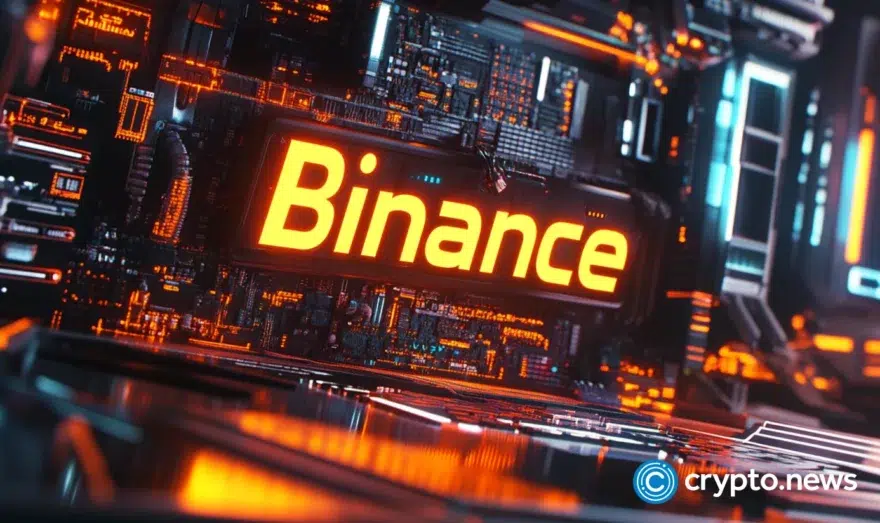Binance vs. FTX: Which Is Better to Trade and Grow Crypto Holdings On?

Binance is the largest crypto exchange by trading volume. The exchange posts trading volumes of over $15B daily. FTX is another significant crypto exchange by trading volume. It posts daily trading volumes of around $3B and is ranked third globally according to coinranking.
The two exchanges are centralized, meaning their governance depends on their top management. The two have many differences and similarities that set them apart from their competitors. One of the many things they have in common is their launch timelines. They both are among the latest crypto exchanges to hit the market. Binance was launched in June 2017, while FTX began operations in May 2019.
They have both grown over time to challenge their predecessors and claim the top spots in the crypto space. The two platforms have been propelled to such growth by the high-level features that set them apart from other exchanges. They also charge lower fees than most of their competitors do.
The two exchanges also capitalize on investor security, which is shown by their efforts to diversify their services and introduce high-level security features. They both have native tokens that act as utility tokens within their ecosystems and means of passive earning. Here is more information on Binance and FTX and the comparison between their ecosystems.
Company Overview
Binance is based in Malta and was launched by a Chinese engineer known as Changpeng Zhao or CZ. It has grown to be the largest in terms of the daily trading volume. It was initially based in China but was relocated in 2018 due to regulatory uncertainties.
It stands as one of the most regulatory compliant crypto exchanges globally as it has incorporated AML/KYC protocols and is licensed in some countries like France. However, it is still under heavy criticism by different governments, including the US which currently probing it.
FTX was launched in 2019 and is based in the Bahamas. Crypto trader Sam Bankman-Fried found it to make it a go-to crypto trading platform. The exchange has grown to amass a net worth of over $18B. It is a CEX governed by experienced specialists who previously worked in reputable places like Google, Silicon Valley, and Wall Street.
The exchange allows its users to interact with the market through different types of trading, including spot, margin trading, derivatives, and leveraged tokens. Its spot market has a rich selection of over 300 available crypto assets. It also supports over 10 fiat currencies to facilitate the deposit and withdrawal of fiat from different regions. It has competitive fees that are even lower than Binance’s and a discount system for its FTT coin holders and large trades.
Binance vs. FTX Summary
Below is a summary of how the two exchanges fair in a tabulated format.
| Feature/ Service | Binance | FTX |
| Supported cryptos | Over 600 | Over 300 |
| Trading fees | Up to 0.10% for both makers and takers | Up to 0.07% for Takers and 0.02% for Makers |
| Withdrawal fee | 0.0005BTC | 0.000043 BTC |
| Deposit methods | Both Fiat and crypto. Fiat is supported through Wire, bank, and credit cards | Fiat and crypto. Fiat is supported through Wire, bank, and credit cards |
| Derivatives | Yes | Yes |
| Business accounts | Yes | No |
| Integrated wallet | Yes | No |
| 2FA protocols | Yes | Yes |
| AML/ KYC protocols | Yes | Yes |
| Insurance funds/ treasuries | Uses 10% of trading fees to build an insurance treasury fund | Has an insurance fund comprised mostly of the fees paid by users trading derivatives with over 50X leverage |
| Additional security layer | Binance has 2FA protocols and login passwords as security layers. It also supports 2FA for hardware wallets. | Only has 2FA and separate password security layers |
| Cold storage | Yes | Yes |
| Methods of passive earning | Staking, Defi staking, Lock up savings, Binance Earn, ETH 2.0 Staking, Binance Vault, and Binance Launchpad | FTX staking, FTX Earn, |
Comparison Between the Key Features of Binance and FTX
Binance and FTX are among the best crypto exchanges due to their better features than most of their competitors. Here is how the two compare in terms of their key features.
Supported cryptos
Binance supports over 600 different cryptocurrencies. It has all of the top 20 cryptos by market capitalization to ensure that its users benefit from various assets to diversify their portfolios. The exchange also supports over 500 trading pairs, allowing users to easily trade between them in different markets, including spot and derivatives.
FTX supports over 300 different cryptocurrencies. It also supports the largest cryptos like Bitcoin (BTC) and Ethereum (ETH) to allow users to interact with the markets more completely. Although its selection of cryptocurrencies is lower than Binance’s, it is much higher than most of its competitors, like Coinbase and Crypto.com. It also supports over 100 different spot trading pairs.
Trading fees
Both exchanges charge relatively low fees for their trades, be it for market makers or takers in the spot markets. They also have a discount system determined by the trades’ size, where large trading volumes are awarded more significant discounts.
However, FTX charges lower fees as compared to Binance. It requires makers to pay fees of around 0.02% while takers pay 0.07%. These fees also change with the level of trading accounts. These are the tier 1 level account fees meaning that they are what the newest traders pay for while using FTX.
Binance has significantly higher fees as compared to FTX. It requires its market makers to pay up to fees of up to 0.10%. Additionally, it has a system where users pay about 10% less by using BNB to settle the fees. However, the fees are still higher (0.075%) than FTX’s even after using BNB.
The other significant difference in the fee structure of the two exchanges lies in the discount given upon referring other traders. FTX gives the new referees $30 fee-free trades. They are also given a 10% discount on fees for life. Binance also has a similar offer where it gives cashback on referrals. It also discounts trading fees for those who refer new traders, but a referee can only be used once.
Regulatory compliance and controversies
2022 has been hard for the crypto space as Bitcoin, and the altcoins are yet to make surprising comebacks from their November 2021 dip. The market has been a mixture of a dip and a sideways trend, primarily due to regulatory compliance and other economic issues. Most countries are preparing regulatory frameworks for cryptos, which makes regulatory compliance an essential feature when comparing crypto exchanges.
Both Binance and FTX are working hard on being regulatory compliant. They constantly track their trades and cannot allow questionable transactions without flagging them. They also have AML/ KYC protocol to keep financial foul plays like money laundering away from the crypto space.
However, not all regulators are happy with the two exchanges. Binance has been in the spotlight on different occasions for regulatory compliance issues. It has been fined by some countries like Turkey on claims of violating legal operation directives. Conversely, some regulators have also accepted it like a recent licensing by France.
FTX is more compliant compared to FTX. It has not been a target of significant regulators as it offers a smaller selection of assets; thus, its operations are less riskier. It also is allowed to operate in the US, where most exchanges, including Binance.com are not allowed to conduct business.
Security and insurance
Security has become a vital issue in the crypto space over the past few years. There has been a spike in the rates of scamming and other related cyberattacks, mainly after the bullish 2021 market cycle. The most targeted platforms are in the DeFi sector, but centralized crypto exchanges have also been increasingly targeted. Therefore, security reinforcement is one of the key features that users should research while looking into the available crypto platforms to trade on.
Both Binance and FTX are doing a great job at ensuring that their users’ funds remain safe. They both have 2FA protocols, with Binance supporting 2FA for cold storage wallets. They also store their funds in cold wallets with only a tiny portion of it left on the exchange to facilitate everyday transactions. They also have insurance funds to cater for funds that could be lost due to mistakes they could make.
FTX has the upper hand in terms of security as it has regular transactional audits by Chainalysis and has never been a victim of a cyber attack, unlike Binance. It has maintained its security integrity due to its industry-level security features.
Trading experience
Both FTX and Binance have user interfaces made with a professional touch that makes it easier for investors to access their services. However, it could take novice traders some time to figure out how to use them as they are made to be a fit for a different level of traders, including the very experienced ones.
Binance has the upper hand over FTX in terms of user-friendliness and the trading experience due to various reasons. It has active customer support services and the Binance Academy, which help traders determine how to satisfy particular trading needs within the ecosystems.
Although FTX does not have an academy that helps its users to get extra help like tutorials on how to use it, it has an active customer support service. Its customer support service helps users deal with different issues, including technical difficulties making their trading experiences much better.
However, it is best to note that while these exchanges capitalize on the profitability of the trades made by their users, they do not deliver the best user-friendly environments. Users often have to refer to tutorials to learn how different protocols work in the two exchanges. Therefore, it is best for novice traders to look for much friendlier platforms or to focus on learning how the two exchanges function before using them.
Methods of passive earning
Both Binance and FTX are good exchanges for users to grow their crypto holdings passively. They both allow for the locking and enjoying of passive incomes at different rates.
Binance has the upper hand in passive earning since it has more options than FTX. It has the Binance Earn protocol that encompasses different passive earning methods. These methods include:
- DeFi staking
- ETH 2.0 staking
- Locked Savings
- Binance Vault
- Binance Launchpad
- Dual investment
FTX is also a great CEX as it allows users to grow their crypto holdings through staking. It also has an FTX Earn protocol where other staking methods, including partnerships with other platforms, are supported.
BNB vs. FTT
Binance Coin (BNB) is the native token of the Binance ecosystem. It serves as the ecosystem’s utility token by settling gas fees, transaction fees, and powering some protocols like passive earning. It was initially launched as an ERC-20 token but was later integrated on its own Binance Beacon Chain. The exchange also made the Binance Smart chain (BSC) that functions similarly but supports smart contracts.
FTT token is the native token of the FTX ecosystem. It operates as a utility toke within the exchange and powers some protocols like the FTX Earn and its staking pools. It can also settle fees for transactions carried out in the exchange.
Final Word
The major question now is which exchange is better between Binance and FTX. The answer is simple; a high breed usage of the duo is the best solution. Both exchanges have similar and high-level features that set them apart from most of their competitors. They are highly secure and user- friendly, offer wide selections of assets to trade, and offer different trading options.
They also differ extensively in some features like fees and passive earning. That makes them hard to set apart as they both have vital elements that could make a trader’s work more accessible and profitable. For instance, Binance has the Binance Earn protocol that allows users to grow their holdings passively. Although FTX has a similar protocol, Binance has the upper hand. Also, FTX has the upper hand in trading fees, security, and legal compliance.
Those differences make it difficult to separate the two and decide which is best to use. However, a brilliant trader could take advantage of the two exchanges. Since Binance has a more profitable way of earning passively, a trader could use it for staking purposes. Also, since FTX has good legal compliance, lower trading fees, and is highly secure, trader coils use it for spot trading.
Using such a strategy, the trader would have more profitable trades than earmarking just one exchange. They would also enjoy the diversity of relying on different platforms that offer other products. This strategy could also minimize risks where exchanges collapse and lead to huge losses or inconveniences.
Additionally, traders should learn to research different platforms as some may offer better services than others. For Instance, Derivatives traders could refer to other alternatives like BitMEX that offer high leverages and better trading tools. Also, remember to be cautious while investing in the crypto space as it is unregulated ad thus highly vulnerable to risks like market manipulation that lead to huge losses.














